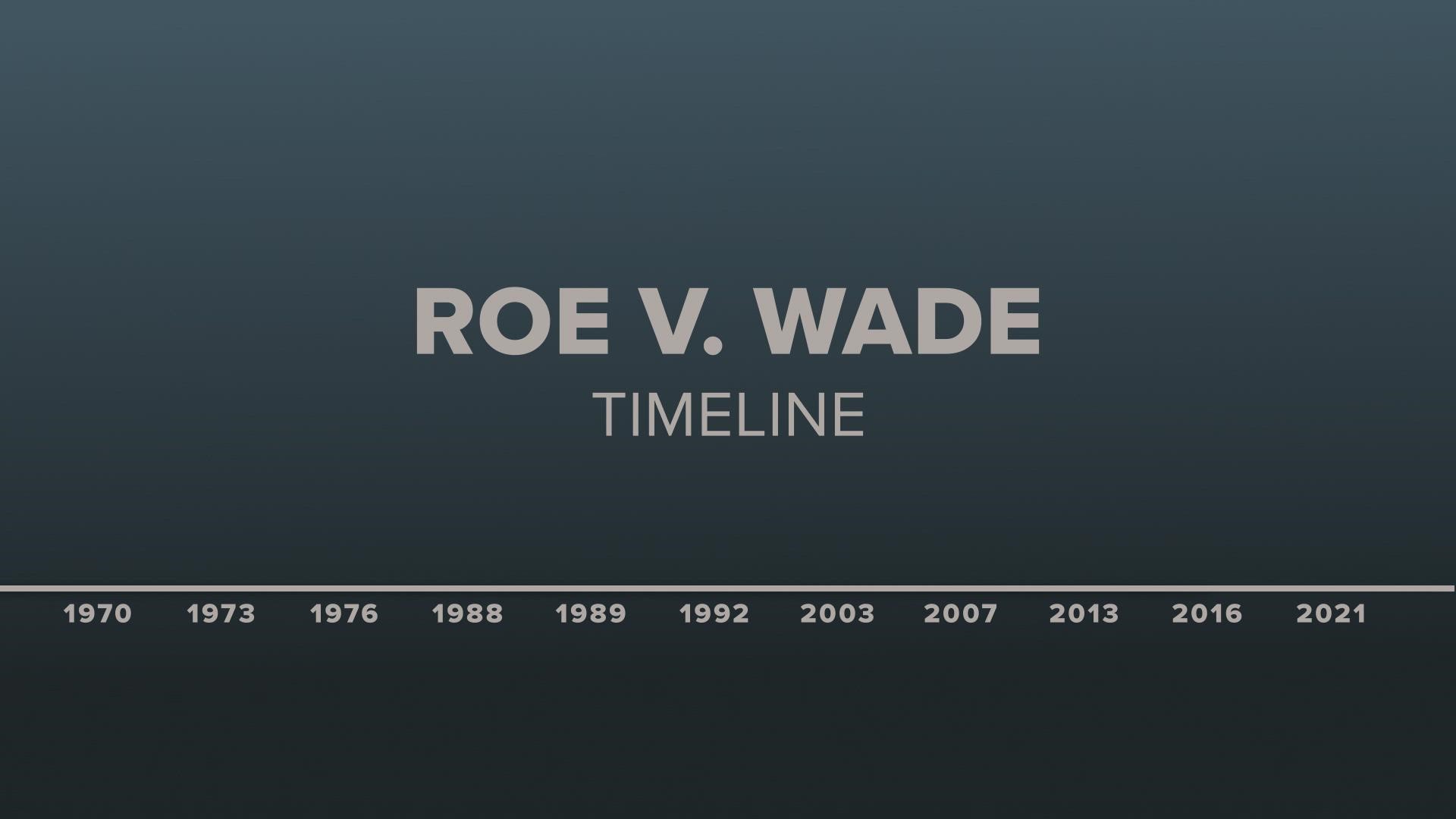WASHINGTON, D.C., USA — The U.S. Supreme Court handed down a landmark decision Friday when they ruled to overturn Roe v. Wade. The ruling gives states the power of whether to allow abortion.
Here's how Roe v Wade came to be and came to an end.
March 1970: Two attorneys file a lawsuit in U.S. federal court on behalf of Norma McCorvey, a Texas resident, who wanted to terminate her pregnancy.
The filing, "Jane Roe v. Wade, argued that Texas' abortion statutes were unconstitutional and violated McCorvey's privacy under five Constitutional amendments.
January 1973: A 7 to 2 Supreme Court decision in favor of "Jane Roe," rules that the Constitution protects the right to an abortion. The all-male justices found abortion was a "fundamental" right for a woman's "life and future,"
September 1976: The Hyde Amendment, a restrictive measure prohibiting government funds to be spent on abortions except in the case of rape, incest or a threat of life to the woman, is passed.
1988 and 1989: Lawmakers in Pennsylvania amend the state's Abortion Control Act and add 5 provisions, including informed consent before an abortion, a 24-hour waiting period, consent of one parent for a minor to have the procedure and a husband notification requirement for married women.
June 1992: Planned Parenthood of Southeastern Pennsylvania v. Casey. The Supreme Court's 5 to 4 decision upholds three of the provisions. The court did invalidate the husband notification requirement.
November 2003: President George W. Bush signs into law the Partial-Birth Abortion Ban Act which prohibits doctors from performing late-term abortions.
April 2007: The Supreme Court upholds the federal ban on late-term abortions, ruling 5 to 4 in the Gonzales v. Carhart case. The justices found that it was not unconstitutionally vague and did not impose an undue burden on the right to an abortion.
July 2013: Texas lawmakers enact House Bill 2...with provisions that include requiring doctors performing abortions to have hospital admitting privileges no more than 30 miles from the abortion facility.
Abortion providers in Texas challenge the requirements, arguing that they violate the 14th Amendment under Casey. This challenge ultimately ends up before the Supreme Court and is struck down in June 2016.
June 2016: The Texas admitting-privileges and surgical center requirements law is struck down by the Supreme Court in a 5 to 3 ruling.
May 2021: The high court agreed to hear Dobbs v. Jackson Women's Health Organization case, the Mississippi law that bars abortions after 15-weeks of pregnancy. Later, Mississippi state officials would ask the Supreme Court to overturn Roe and Casey.
September 2021: Texas enacts Senate Bill 8 or the Heartbeat Act. The first time a state successfully imposed a 6-week abortion ban since Roe v. Wade. The Act also gave members of the public, versus state officials, the right to sue anyone who performs or helps facilitate an illegal abortion.
The Department of Justice challenges S-B-8 and in December the Supreme Court ruled to keep Texas' ban on most abortions in place, limiting who can sue state officials.
May 2, 2022: A 98-page draft opinion written by Justice Samuel Alito in the Mississippi abortion case is leaked. Justice Alito wrote in his draft that Roe was "egregiously wrong from the start," and "must be overruled."
June 24, 2022: The Supreme Court overturns Roe v. Wade, effectively ending nearly 50 years of federally guaranteed access to abortion.

